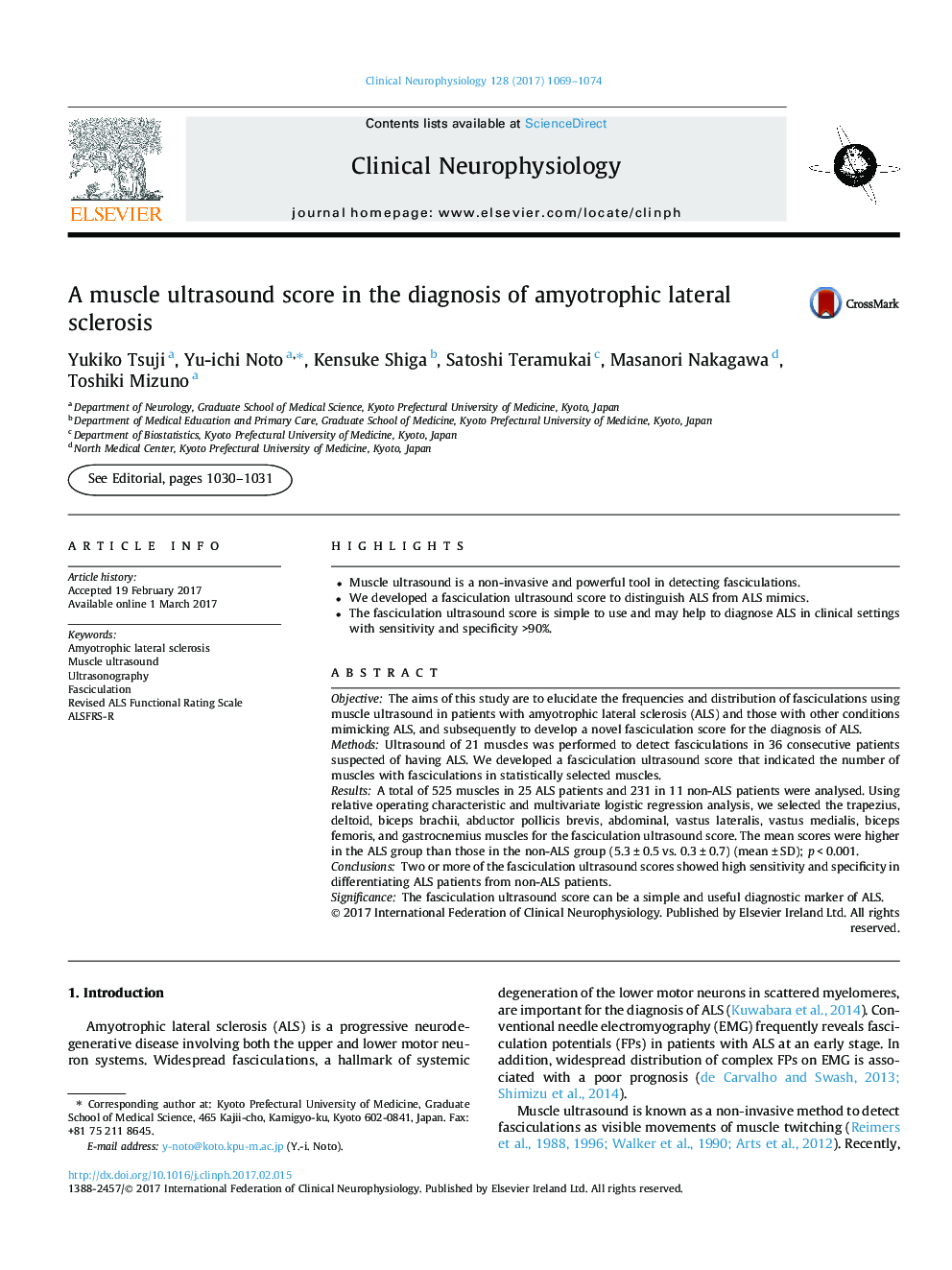| Article ID | Journal | Published Year | Pages | File Type |
|---|---|---|---|---|
| 5627917 | Clinical Neurophysiology | 2017 | 6 Pages |
â¢Muscle ultrasound is a non-invasive and powerful tool in detecting fasciculations.â¢We developed a fasciculation ultrasound score to distinguish ALS from ALS mimics.â¢The fasciculation ultrasound score is simple to use and may help to diagnose ALS in clinical settings with sensitivity and specificity >90%.
ObjectiveThe aims of this study are to elucidate the frequencies and distribution of fasciculations using muscle ultrasound in patients with amyotrophic lateral sclerosis (ALS) and those with other conditions mimicking ALS, and subsequently to develop a novel fasciculation score for the diagnosis of ALS.MethodsUltrasound of 21 muscles was performed to detect fasciculations in 36 consecutive patients suspected of having ALS. We developed a fasciculation ultrasound score that indicated the number of muscles with fasciculations in statistically selected muscles.ResultsA total of 525 muscles in 25 ALS patients and 231 in 11 non-ALS patients were analysed. Using relative operating characteristic and multivariate logistic regression analysis, we selected the trapezius, deltoid, biceps brachii, abductor pollicis brevis, abdominal, vastus lateralis, vastus medialis, biceps femoris, and gastrocnemius muscles for the fasciculation ultrasound score. The mean scores were higher in the ALS group than those in the non-ALS group (5.3 ± 0.5 vs. 0.3 ± 0.7) (mean ± SD); p < 0.001.ConclusionsTwo or more of the fasciculation ultrasound scores showed high sensitivity and specificity in differentiating ALS patients from non-ALS patients.SignificanceThe fasciculation ultrasound score can be a simple and useful diagnostic marker of ALS.
